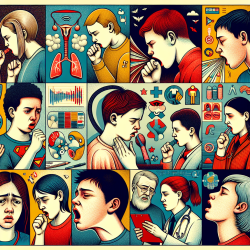Introduction
Chronic cough in children and adolescents is a challenging condition that often perplexes healthcare providers. While common causes such as protracted bacterial bronchitis and bronchial asthma are well-documented, other etiologies like tic cough remain underrecognized. The case report titled Tic Cough in an Adolescent with Organic Brain Pathology—A Case Report and Literature Review provides valuable insights into this lesser-known condition and underscores the importance of a comprehensive diagnostic approach.
Case Overview
The report details the case of a 13-year-old girl with a history of hydrocephalus and corpus callosum atrophy, who presented with a persistent dry cough. Despite exhaustive medical evaluations, no physical cause was identified, leading to the diagnosis of tic cough. This case highlights the necessity of considering tic cough in differential diagnoses, especially when common treatments fail.
Clinical Features and Diagnosis
Tic cough is characterized by features typical of tic disorders, including suppressibility, distractibility, and the presence of a premonitory sensation. In the case presented, the cough subsided during sleep and was resistant to conventional medical treatments, aligning with the characteristics of tic cough.
- Suppressibility: The ability to temporarily suppress the cough when distracted or engaged in activities.
- Premonitory Sensation: A feeling or urge preceding the cough, which is relieved by coughing.
- Absence During Sleep: The cough disappears when the patient is asleep, indicating a non-organic cause.
Implications for Practitioners
For practitioners, this case underscores the importance of a multidisciplinary approach in diagnosing and treating chronic cough. Speech-language pathologists, psychologists, and psychiatrists can play crucial roles in identifying and managing tic cough. Behavioral therapies, such as cough suppression techniques, have shown promise in treating this condition.
Practitioners are encouraged to:
- Consider tic cough in the differential diagnosis of chronic cough, especially when traditional treatments are ineffective.
- Utilize a multidisciplinary team to provide comprehensive care, including psychological and behavioral interventions.
- Stay informed about emerging research and treatment modalities for tic disorders.
Conclusion
The case of tic cough in an adolescent with organic brain pathology illustrates the complexity of diagnosing chronic cough and the potential for misdiagnosis. By increasing awareness and understanding of tic cough, practitioners can improve outcomes for affected children. For further reading, access the full research article here.










